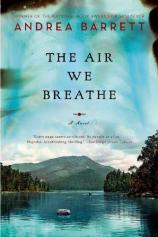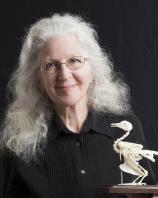Reading Group Guide
Discussion Questions
The Air We Breathe

1. Who betrays whom over the course of the novel? How do those betrayals and underlying conflicts mirror what’s going on in the larger world? Can you connect those betrayals to the novel’s unusual narrative voice?
2. The two opening chapters explicitly contrast conditions at the public sanatorium of Tamarack State, inhabited largely by impoverished immigrants, and the cure cottages of Tamarack Lake, inhabited by wealthy patients. Discuss the role class differences play in the novel.
3. The novel’s plot turns, in part, on a triangle of misplaced attractions: Miles is drawn to Naomi, who’s drawn to Leo, who in turn is drawn to Eudora. What do you think keeps each of these characters from perceiving the reality of the situation? Why, for instance, is Naomi so attracted to Leo, and why might she believe so deeply that the attraction is reciprocal?
4. What analogies do you see between the characters’ misconceptions of one another and the way the patients as a whole are perceived by their families and by politicians? Between the way the healthy perceive the patients and the way they perceive immigrants?
5. Leo Marburg, who enters Tamarack State as the novel opens, catalyzes much of the action. How do you account for his effect on others? Do you view him as a romantic figure? And what role does his love for chemistry play? Elsewhere in Barrett’s work, he appears as the elderly grandfather of Rose and Bianca Marburg, both of whom learn to love science because of him. Does that knowledge affect your understanding of Leo here, as a young man?
6. Dr. Petrie’s attitude toward both his patients and his coworkers, especially Irene, seems quite sane and balanced; he’s also responsive, at first, to Miles Fairchild. How do you view the conflict that ultimately develops between them? What role does Dr. Petrie play in the group’s reaction to Leo after the fire?
7. Irene, who listens sympathetically to the patients while she takes “roentgenograms” of their chests, hides from them the wounds caused by her experiments with the X-rays. Dr. Petrie at first conceals, and then reveals, some of the effects of the first uses of gas warfare in France. Discuss how they and other characters are affected by the explosion of new technologies, and their relative degrees of knowledge about them. Do some seem to profit from the American entry into the war?
8. In an essay about working on this novel (“The Sea of Information,” Best American Essays, 2005) Barrett wrote: “The more I learned about the First World War, the more I saw how much it had in common with what was known at the time as the ‘War Against Tuberculosis.’ Those wars overlap exactly in time --- but also, more importantly, in their uses of propaganda and corrupted public language. The militaristic, and yet at the same time euphemistic, language of the ‘War Against Tuberculosis’ is very like that found in the documents used to whip up American support for entry into the war. The sound of that language interests me a good deal --- it’s a sound that’s becoming familiar again.” How do various forms of propaganda affect characters in this novel? How would you compare the language used then to language you see now in print and television journalism?
9. Tuberculosis, nearly eradicated at one point, has become a serious problem again with the advent of an extensively drug-resistant strain (XDR-TB). For the first time in decades, public health officials have quarantined patients positive for this. What would you do if you, or someone you loved, developed XDR-TB? How would you want to be treated?
10. What associations does the title have for you? How do you interpret the two epigraphs, drawing from sources written more than a century apart?
The Air We Breathe
- Publication Date: October 17, 2008
- Genres: Fiction
- Paperback: 320 pages
- Publisher: W. W. Norton & Company
- ISBN-10: 0393333078
- ISBN-13: 9780393333077








